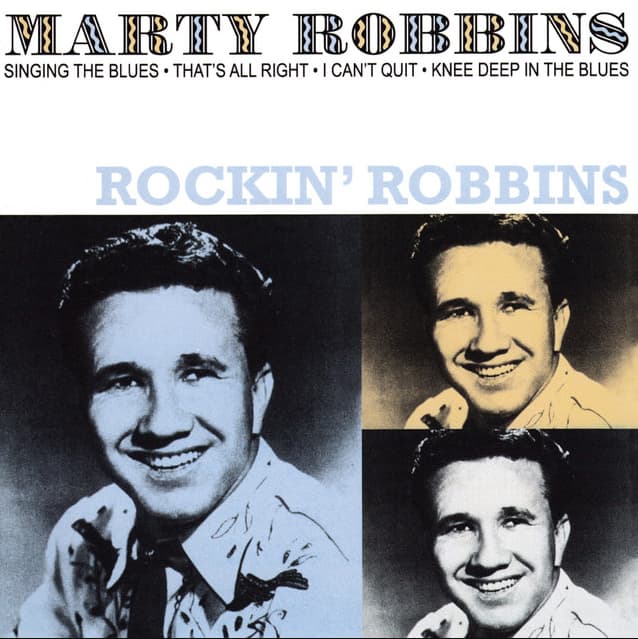
Marty Robbins – That’s All Right (1954): A Nostalgic Dive into the Roots of Rockabilly
In 1955, a year that was swiftly becoming synonymous with musical innovation and cultural shifts, Marty Robbins released a track that would resonate through the halls of rockabilly history—“That’s All Right.” This song, while not necessarily topping the charts like some of its contemporaries, carved out its own niche in the evolving soundscape of American music. Its release during a transformative era in music history makes it a fascinating piece to reflect upon, especially for those who witnessed the dawn of rock and roll.
Marty Robbins, often celebrated for his diverse musical style ranging from country to pop and even Hawaiian influences, ventured into the burgeoning world of rockabilly with “That’s All Right.” Originally penned by Arthur “Big Boy” Crudup and famously covered by Elvis Presley, Robbins’ rendition brought a unique twist that showcased his versatility as an artist. His ability to blend genres was not only a testament to his talent but also an indicator of the fluid nature of music during this period. As listeners dropped the needle on their records, they were greeted with a sound that was both familiar and refreshingly new.
The mid-1950s were marked by a sense of rebellion and experimentation, and music was at the forefront of this cultural upheaval. “That’s All Right” embodied this spirit. The song’s upbeat tempo and catchy guitar riffs captured the youthful exuberance of the time. For many older listeners today, hearing this track might evoke memories of sock hops, jukeboxes glowing in dimly lit diners, and the unmistakable feeling that something exciting was happening in American culture.
While “That’s All Right” did not achieve the chart-topping success of some other hits from 1955, its significance lies in its contribution to the rockabilly movement. This genre, which fused elements of country (“hillbilly”) music with rhythm and blues (“rock”), laid the groundwork for what would eventually become mainstream rock and roll. Marty Robbins’ interpretation added depth to the song’s legacy, serving as a bridge between different musical worlds.
The story behind “That’s All Right” is one of evolution—of a song, an artist, and an era. Originally recorded by Crudup in 1946 as a blues number, its transformation into a rockabilly anthem underlines the dynamic nature of musical influence and reinterpretation. Robbins’ version retained the core emotional resonance of Crudup’s original while infusing it with a spirited energy that was characteristic of 1950s America.
For those who lived through these transformative years, revisiting “That’s All Right” offers more than just a musical experience; it’s a journey back to a time when music was rapidly breaking boundaries and reshaping societal norms. Marty Robbins’ contribution with this track reminds us of an era when artists weren’t confined by genre labels but rather inspired by the possibilities that lay beyond them.
In reflecting upon Marty Robbins’ “That’s All Right,” one is reminded not only of the song itself but also of its role in a larger narrative—a chapter in the story of how music can capture the essence of an age, leaving an indelible mark on those who experienced it firsthand. As we listen today, we connect with those memories and emotions, painting vivid pictures from our past that resonate with every strum and lyric.